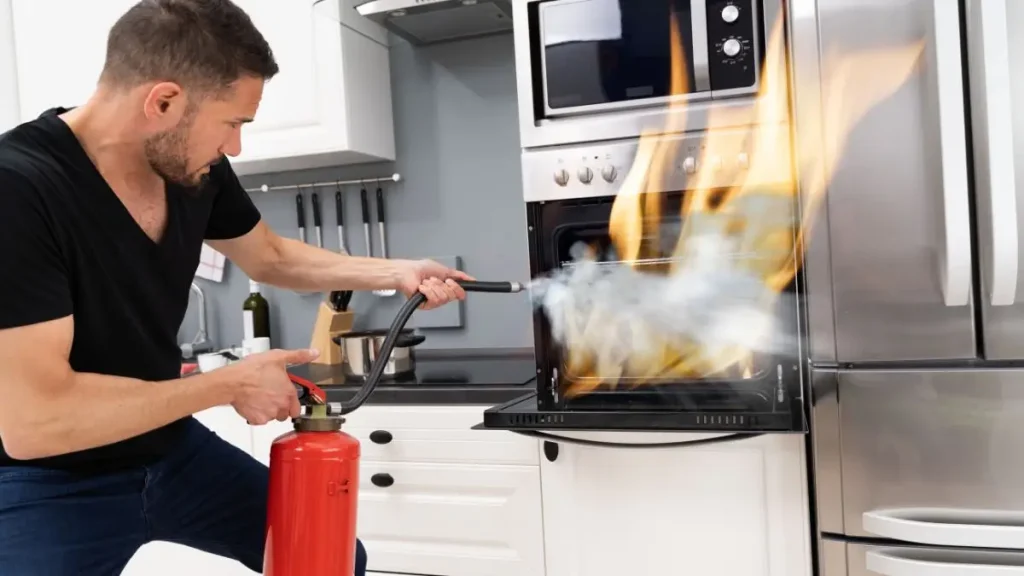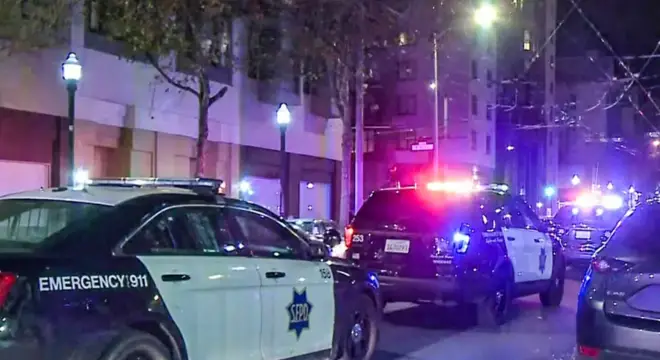Iowa City Resident Suffers Burns in Cooking Fire in Home
I can’t stop thinking about how fast something so normal—just cooking dinner—turned into a fire that sent someone to the hospital.
It happened Friday evening in Iowa City, on Westwinds Drive. One person ended up burned after a kitchen fire broke out in their apartment. Firefighters were called just before 8 p.m., and even though they reached within five minutes, the flames had already been put out. Still, it was serious enough to injure someone and cause about $1,500 in damage.
This wasn’t some huge blaze. It was a small, contained fire—but it was enough. And that’s what makes it real. Most cooking fires don’t make headlines unless someone gets hurt. This time, someone did.
Have you ever had a close call in the kitchen? What did you learn from it? Let’s talk about it in the comments.
How It Happened — Fire Put Out, But Not Before It Harmed Someone
I want you to picture this: You’re at home, maybe distracted for just a minute, and suddenly, the stove flares up. That’s all it takes.
According to a report by KCRG, that’s exactly what happened in this Iowa home cooking fire. The call came just before 8 p.m. Friday. Iowa City firefighters rushed to the apartment on Westwinds Drive, arriving barely five minutes later.
But by the time they got there, the fire was already out.
Still, it had already done damage—one resident had suffered burns. They were treated on-site and then taken to the hospital. The good news? No one else in the home was hurt. But when something like this happens that fast, it makes you wonder—would I be prepared?
The Cause? Still Under Investigation—But We’ve Seen This Before

I know what you’re probably thinking: What started the fire? Was it a grease spill, an unattended burner, or something else? You deserve to know—but right now, it’s still unclear.
According to CBS 2 Iowa, officials confirmed it was a cooking-related fire, the exact cause—such as grease ignition or unattended heat—is still under investigation by the Iowa City Fire Marshal.
But let me tell you this—as someone who’s studied countless cases like this, most home cooking fires start with simple, preventable mistakes. Leaving oil on the stove for too long. Walking away for just “a second.” Heating pans too quickly.
That’s why it’s important we don’t wait for reports to tell us what to avoid. You and I both can learn from these moments before they repeat in our own kitchens.
Sadly, this isn’t the only tragic example—a recent case in Missouri involved a teenager losing his life in a house fire just days after beating cancer.
Are Cooking Fires in Iowa Really This Common? More Than You Think
You might be surprised to hear this, but cooking fires aren’t rare—in fact, they’re one of the leading causes of home fires in Iowa and across the U.S.
I looked into the numbers, and here’s what I found: According to the National Fire Protection Association (NFPA), cooking is responsible for nearly 50% of all home fires. In Iowa, smaller kitchen fires are reported regularly—but most don’t get attention unless someone is injured, like in this case.
And this isn’t the first time Iowa City has seen something like this either. A few years back, a similar kitchen fire caused significant damage to two apartments nearby. Thankfully, those residents escaped with only minor injuries.
I say this not to scare you—but because I want you to realize how quickly everyday cooking can turn dangerous. You and I aren’t immune. That’s the reality.
Have you or someone you know experienced a similar kitchen scare? Share your story in the comments—your experience might help someone stay safer today.
3 Hidden Dangers Most Iowa Homes Ignore
Here’s what no one else is telling you—and what most homes, maybe even yours, are completely unprepared for:
- Missing or Expired Smoke Alarms
You assume it’ll beep when needed. But most people I’ve talked to haven’t checked theirs in over a year. Sound familiar? - No Fire Extinguisher in the Kitchen
I’ll admit—even I didn’t keep one for years. But in grease fire situations, that 10-second delay looking for water (which you shouldn’t even use) can be the difference between a close call and a disaster. - Blocked or Unclear Escape Paths
In apartments or shared housing, exits are often cluttered or poorly marked. Have you practiced how you’d get out in 30 seconds? Most people haven’t. Have you?
If even one of these applies to your home right now—please, let this be your wake-up call. I’m saying this as someone who’s reviewed far too many reports that ended badly for no reason other than these three simple oversights.
Some safety experts have started sharing quick home fire tips and real-time alerts on messaging platforms—it’s surprisingly helpful to stay in the loop. I recently came across one that updates residents about fire incidents, prevention tips, and safety checklists—it made me rethink my own kitchen setup.
What You Can Do Right Now to Stay Safe in Your Kitchen?

Let’s get real—you don’t need to install a full fire system to stay safe. You just need to make a few smart choices. Here’s what I suggest (and what I’ve done in my own home):
- Never leave the kitchen while cooking — Even “just 2 minutes” can be too long.
- Keep a fire extinguisher within reach — Especially one rated ABC (multi-purpose).
- Install and test smoke alarms — Check batteries twice a year. I’ve set reminders on my phone—you can too.
- Use timers and distractions wisely — If you’re multitasking (kids, work, calls), set loud timers to refocus you.
- Learn how to stop a grease fire — Hint: water makes it worse. Smother with a lid or use baking soda.
The key is to act now—not after something like this happens to you.
In another heartbreaking case, a family of seven in New York was left homeless after a sudden house fire, reminding us how quickly lives can change.
Has This Happened Before? What Westwinds Drive Reminds Us About Preparedness
I looked deeper into the area. Westwinds Drive isn’t known for constant fire incidents—but that doesn’t mean it’s immune.
You and I know that most residential blocks—especially older apartments or shared rentals—don’t often get fire safety updates unless something bad happens first.
And when I think about this fire, what sticks with me is how fast it escalated—from a normal evening to a hospital visit in minutes.
This wasn’t some massive structural blaze. But it was enough to make someone leave their home in an ambulance.
So if you live on Westwinds Drive, or in a similar Iowa City neighborhood, take this as your sign. Check your smoke alarms. Talk to your landlord about extinguishers. Make sure everyone in your home knows where the exits are.
Because trust me—this kind of fire doesn’t wait for anyone.
Even in large-scale incidents like a recent massive blaze in Southern Indiana, it’s often the preparation—or lack of it—that defines the outcome.
Final Thoughts
I know this might feel like a one-off incident. A quick fire. A minor injury. Nothing too dramatic.
But here’s what I want you to walk away with: even the “small fires” can change lives. And they almost always come with one thing in common—regret.
I’ve read enough fire reports to tell you the truth: most of them end with a sentence like “The resident said they only stepped away for a moment.”
Let’s not be that story.
If you do one thing after reading this—let it be this:
- Test your smoke alarm
- Walk your family through a 30-second fire escape
- Keep a fire extinguisher where you cook the most
Because whether you live in a small studio, a rented apartment, or a large home in Iowa—you deserve to feel safe in your own kitchen. And that starts with action.
For more stories on fire safety and real home incidents, explore our Home Incidents section—because awareness is the first step toward prevention.
Disclaimer: The information in this article is based on official news sources and public safety reports available at the time of writing. Investigation details may change as authorities release updates. Always follow local fire department guidelines for accurate safety practices.
⭐ Subscribe to Our Newsletter
Subscribe to the publishers newsletter to receive the latest news and updates directly in your inbox


